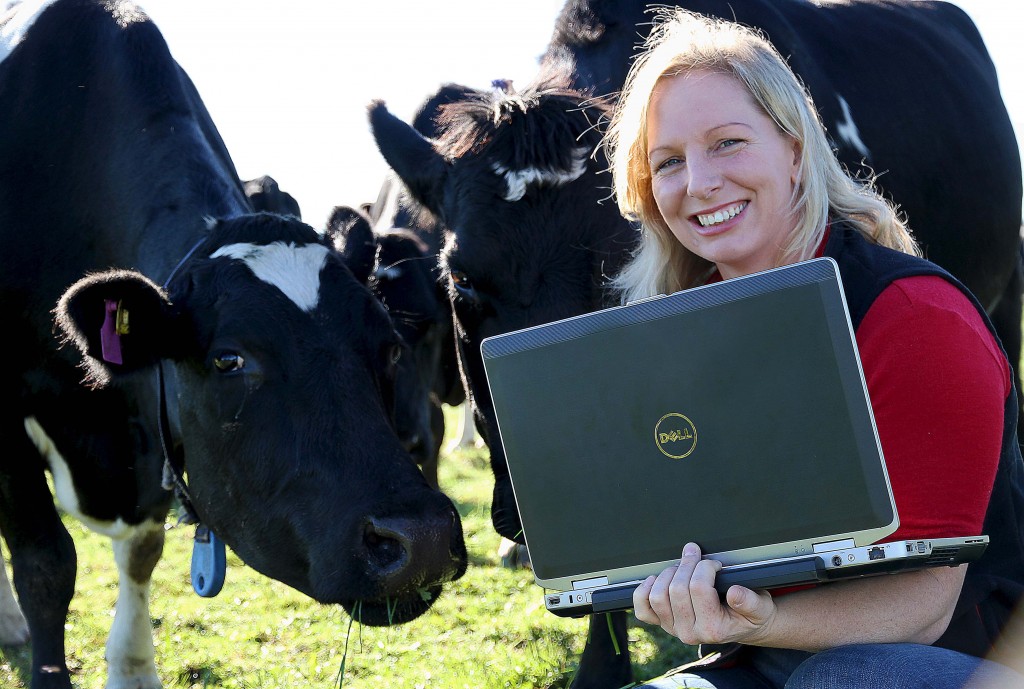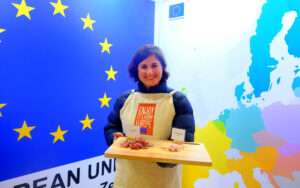Computer model helps New Zealand dairy farmers cope with climate change
A complex computer model that has been likened to a Formula One racing car is helping New Zealand dairy farmers cope with climate change. And playing her part is Waikato PhD student Electra Kalaugher.
A complex computer model that has been likened to a Formula One racing car is helping New Zealand dairy farmers cope with climate change. And playing her part is Waikato PhD student Electra Kalaugher.
As the planet sets sail towards an uncertain future in the shadow of climate change and a growing population, finding strategies for New Zealand’s dairy industry to adapt to climate change are paramount. That’s because of its key position in the New Zealand economy with dairy farming becoming a $12 billion per year industry in 2011.

Developing these strategies has become part of everyday life for Ms Kalaugher, as she works towards her PhD. Ms Kalaugher is looking at options for dairy farmers in different climate change scenarios. She hopes that over three years of study she can make a contribution to developing strategies which will allow farmers and scientists to work together to reduce negative impacts of climate change on the dairy industry and make the most of opportunities.
The main tool is a computer-generated program called the DairyNZ Whole Farm Model, which has been developed since the late 1990s.
Ms Kalaugher takes information from several real farms to set up the model for each farm and then simulate future farming scenarios. In the model each farm has to be scaled down to a 10th of their size so the computing load can be manageable.
While a lot of the research involves updating the different farm scenarios as new information and computer updates become available, the other side of her research is going onto farms and talking to the farmers.
“That’s where the really interesting bit comes in for me, because it is seeing how the modelling fits in with the real world,” she says. This gives her a better perspective on how the farmers see their farming system and how she can integrate the modelling work to support them. “There are limitations to modelling studies, obviously, so it is based on the best information we can put into the model at the time. It then needs to be supplemented with information about the aspects of the farming system that can’t be included in the model.” The best information on this comes from the farmers themselves.
Pierre Beukes, senior scientist and modelling team leader with DairyNZ , is one of the scientists responsible for the development of the computer model. “The program was very rudimentary in its early stages and has been around for about 15 years, but has become really useful in the last 10,” he says.
One main achievement of the DairyNZ Whole Farm Model so far is the capability of modelling the impact of breeding management on farm productivity and profitability over several consecutive years. Cows that calve late produce less milk for the milking season. The program has been useful in working out the best management practice for producing cows that calve early, thus increasing milk production. “If you add the climate conditions in through the model you can also predict what effect that will have on pasture growth and therefore the cows production and condition,” Dr Beukes says.
The DairyNZ Whole Farm Model can be run over several computers, which each run separate simulations as part of a batch run. Thesub-models can deal with dairy cow metabolism, pasture growth, soil type, different crops and also an economic component. All of these separate sub-models are hooked to a framework that coordinate the simulation of the whole farm. The NZ Whole Farm Model’s development has taken many years because it uses data and knowledge that was gained by many scientists conducting component trials over the years.
Weather and future climate information is provided by NIWA. This includes temperature, rainfall and solar radiation for specific regions. The information from NIWA and the farms goes into the model so farms can be seen under a predicted future climate. Then different management strategies are implemented to see what happens to the pasture growth and animals production, giving a picture of a possible farming future.
Ms Kalaugher says: “The farms were set up based on data for the 2010/2011 year and on the farmers description of their management practices. Then it’s a matter of going and running those farms with the future predicted climate. .”
To look at regional differences in current and future climate Ms Kalaugher has collected actual farm information from farms in five different regions, Northland, Waikato, Taranaki, Canterbury to Southland.
The computer model is a large program and needs grunty computers with several CPU’s to complete a simulation in acceptable time. It needs a teamof technicians close by to keep it running. Dr Beukes says: “I always say it is like a Formula One racing car, and needs its teams of technicians around it or it won’t go anywhere.”
Ms Kalaugher: “It’s a matter of putting heads together and seeing how to improve things. In the end it is the farmers who are doing the job so it is basically about asking how we can support them.”
Even though Ms Kalaugher does not have a dairy farming background, having three young boys aged four, six and eight to feed and look after, she realises the importance of her work keeping New Zealand dairy farms as sustainable as possible. “We have to eat and trying to figure out how to do that sustainably is quite useful for everybody.”




